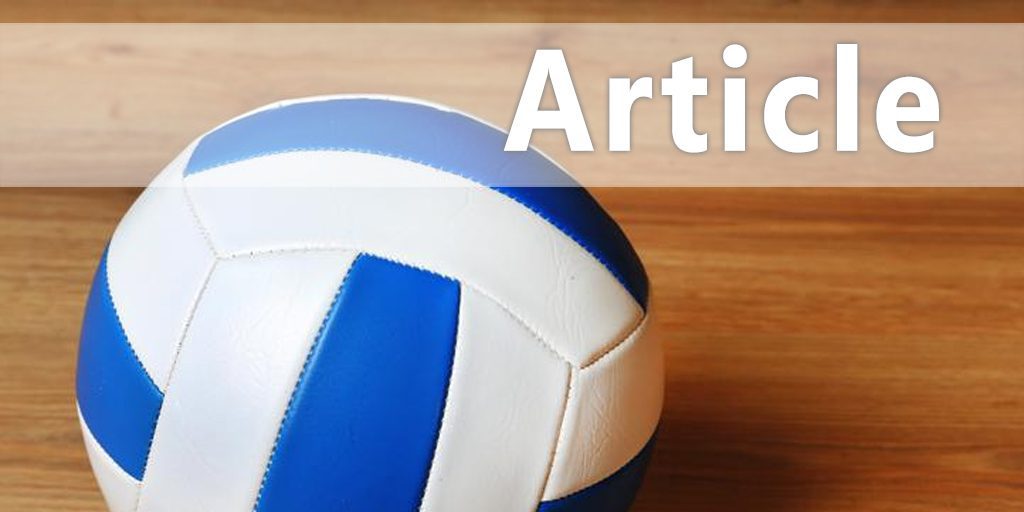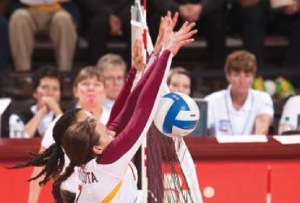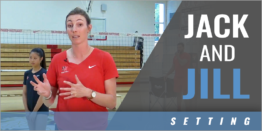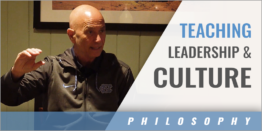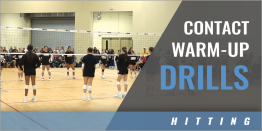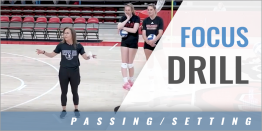|
By: Ken Kontor Originally Published in: Coaching Volleyball Magazine Provided by: AVCA
"There is no best strength and conditioning program, only an ideal one." We just finished a three part series on the University of Minnesota's approach to strength and conditioning in the last issue of Performance Conditioning Volleyball. This was the most comprehensive look at volleyball strength and conditioning programs that we have done in the last 19 years, and it was presented by volleyball strength coach Sara Wiley and Associate Head Coach Laura Bush. But, the term ideal doesn't come from the program's X's and O's. Those are specific to the needs of the Minnesota situation and how it fits their requirements; as you know, we call it "Fit-to-a-T." Every program is unique and what they do is unique in reaction to their specific situation. But it is ideal because of the way it works. Let's start with Sara. Her basis for pro-gram development is embedded into her principles, solid conditioning beliefs that guide her. But Sara takes her principles and goes one step further; she considers the volleyball athlete, their training age and what they bring to the University of Minnesota before principles are applied — Ideal. Here are her basic principles: #1 Establish and maintain joint mobility. #2 Improve force reduction capabilities. #3 Ground-based and multi-planar exercises to build and maintain strength and rate-of-force development. #4 Energy system specific/movement specific. #5 Progressive intensity and complexity as movement efficiency improves. #6 Shoulder and ankle complexes — improve strength, muscle balance and stiffness capabilities. Sara also understands the game of volleyball and demonstrates it by responding to a volleyball coach's needs — Ideal. Sara explains it this way: "We drop to two days in the weight room at the end of these three weeks until spring practice concludes. The reason we drop to two was that Hugh McCutcheon increased the load at practice, so we had to back off. This is important because this is the last time Hugh can educate them until the pre-season in the fall. It is a critical volleyball learning time and backing off in strength and conditioning plays an important part in the athlete's ability to recover." You can't say enough about the importance of recovery and that the ideal function of a strength and conditioning program creates a better, more durable volleyball player, not a weightlifter. That's a fact that is all too often overlooked. A Two Way Street
Now let's plug in the volleyball coaching staff in all this. The strength and conditioning program takes shape right after the season ends — Ideal. Here's the way Laura explains it: "The season ends very soon after our last match. We review the positives, the negatives and also begin to map the spring training block. For volleyball development only, there is a lot of communication among the coaching staff, strength and conditioning staff, and our athletic training staff. Our goal is to assess what each player must achieve in the spring from the strength and conditioning perspective, and we also match this with skill development." They match volleyball skill needs with strength and conditioning needs - Ideal. She continues: "Our training staff and Sara handle the rehabilitation and reconditioning process. The coaching staff is a part of the discussion on how each player is trained and treated. To be clear, we do not direct this process but assist in how volleyball movement and skill development relate to the strength and conditioning progress. We are fortunate to have a great strength coach in Sara Wiley and a very experienced athletic trainer in Ronni Kollasch. They tell us what the player can and cannot do on the court and we design on-court activities around the player's strength and injury limitations." They establish the limitations of each player going into season — Ideal. Let's take this one step further based on NCAA limitations. According to Laura: "For the first six weeks of our spring semester, our athletes are scheduled for a maximum of eight hours a week of "work." Volleyball-specific instruction is only allowed two of those eight hours per week per athlete. Yes, only two hours per week on volleyball! Coach Wiley and her strength staff are able to use six hours a week to increase each player's strength and conditioning. We rely heavily on their expertise to assist in transferring movements learned and strengths gained in her arena to the volleyball arena." Bottom line: they let the strength and conditioning staff do their job — Ideal. All this demonstrates a lot of trust, empowerment and open communication — ideals every volleyball strength and conditioning program should strive to achieve. Share your ideal story: Drop me an email and let's talk Ken Kontor at condpress@aol.com
|
